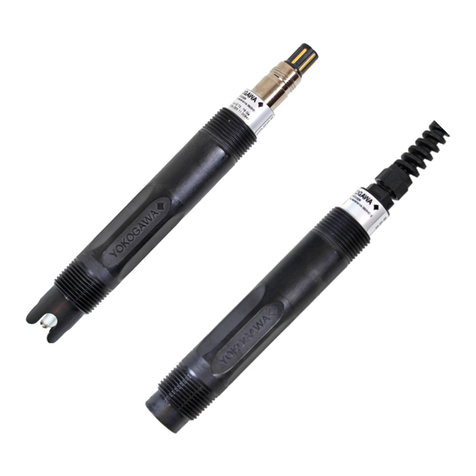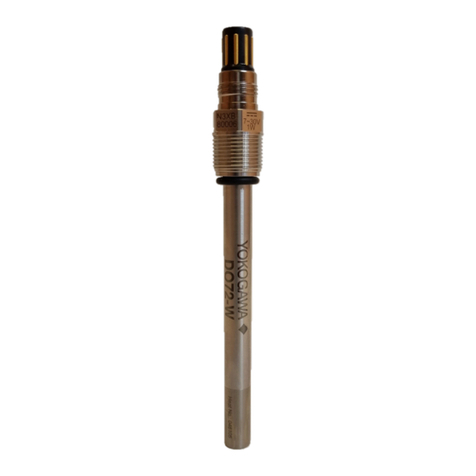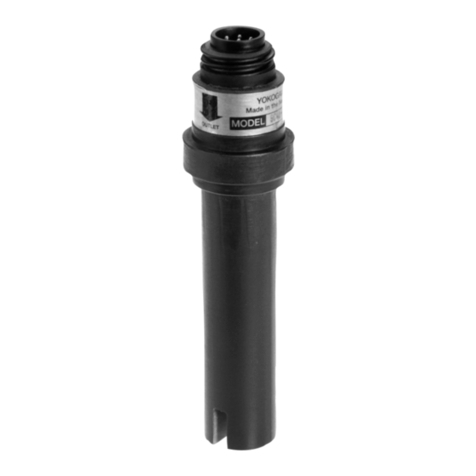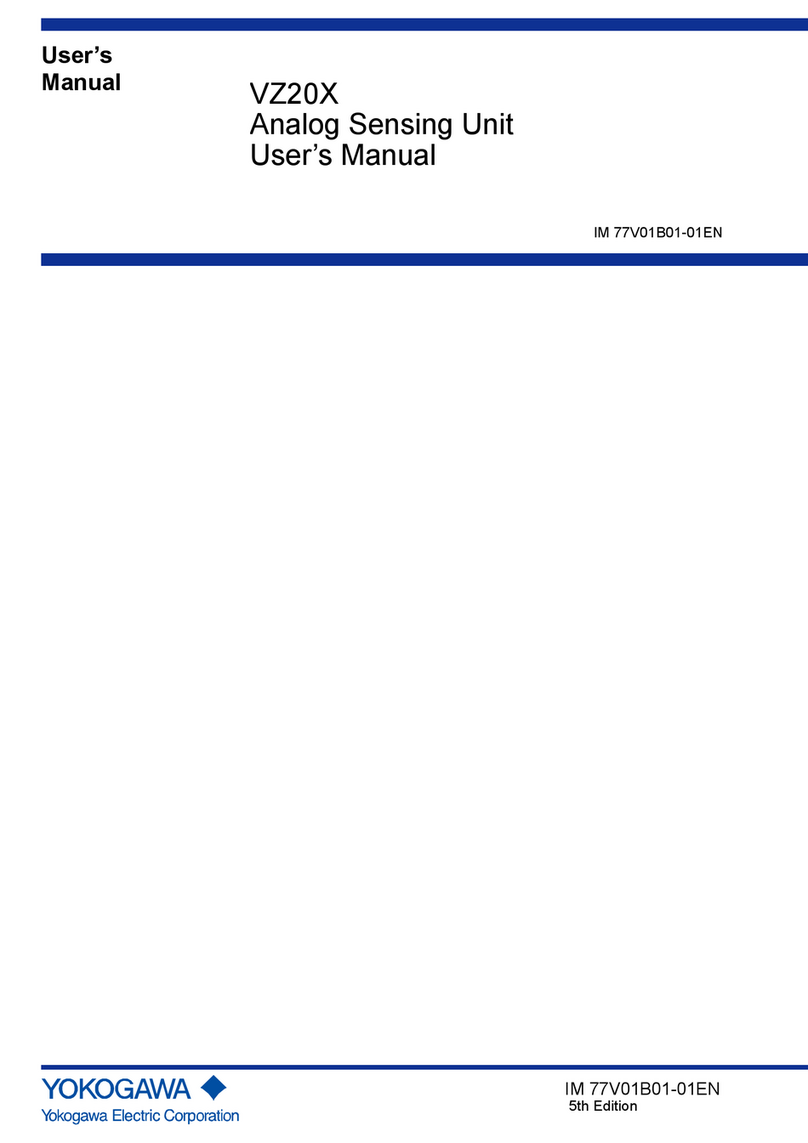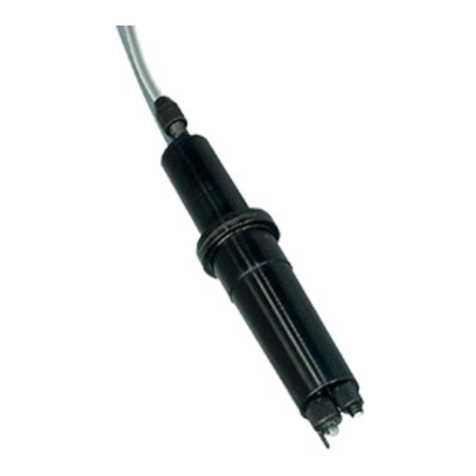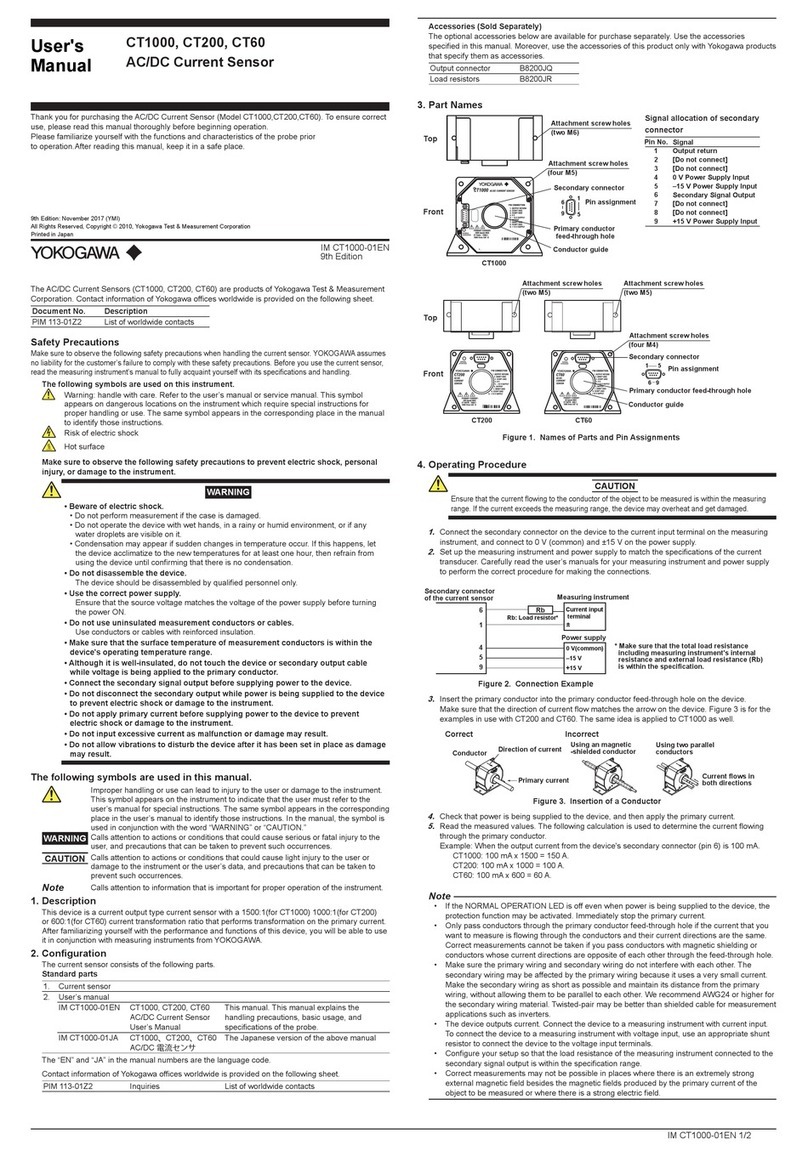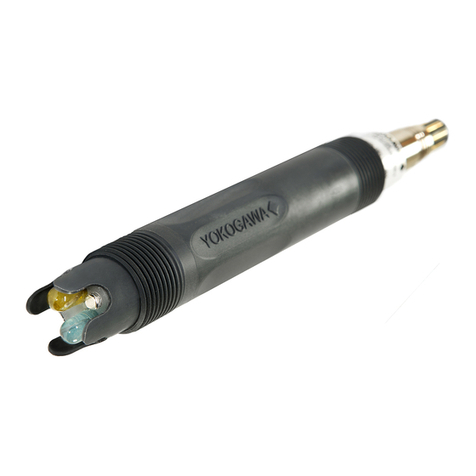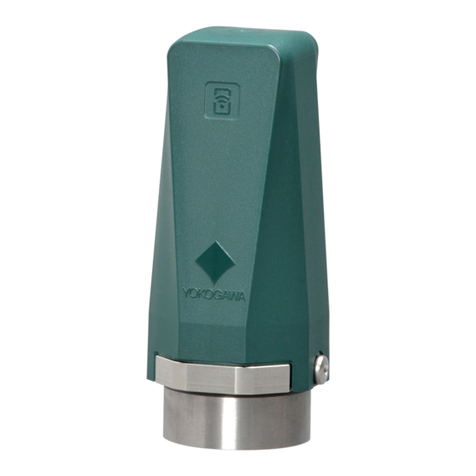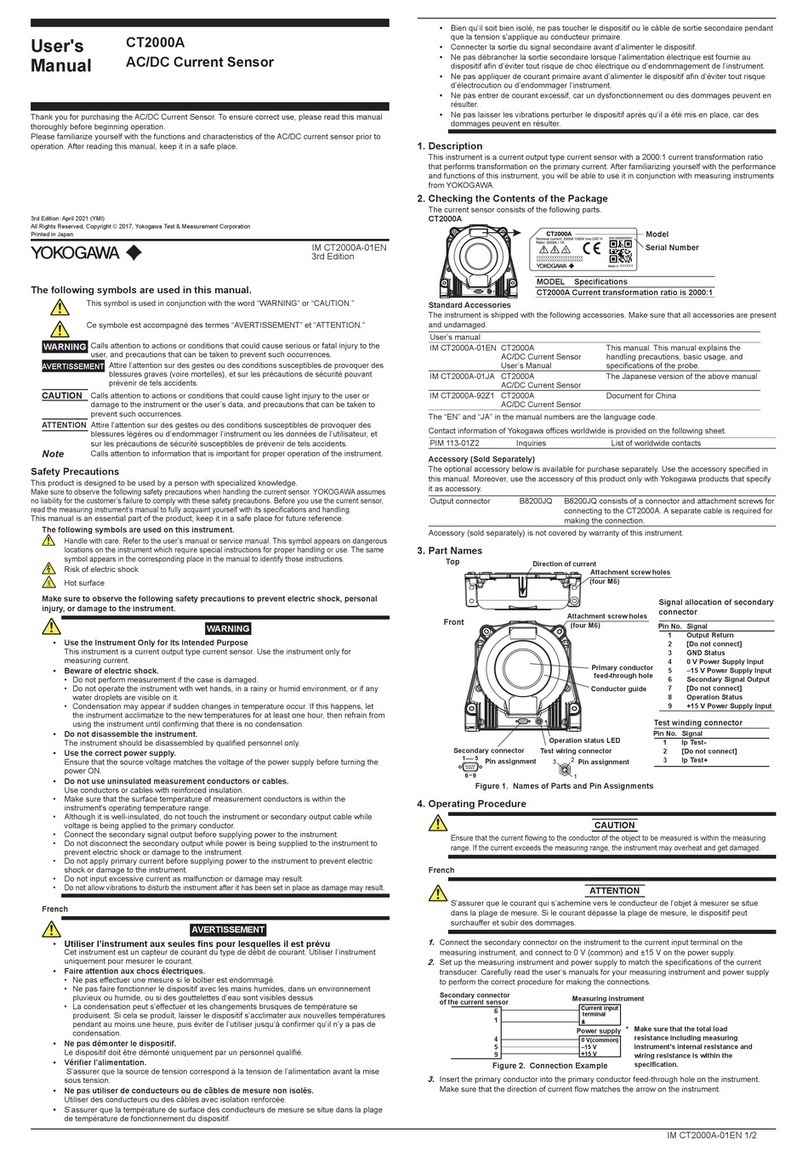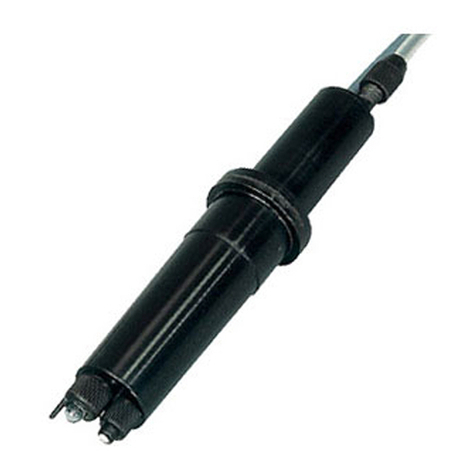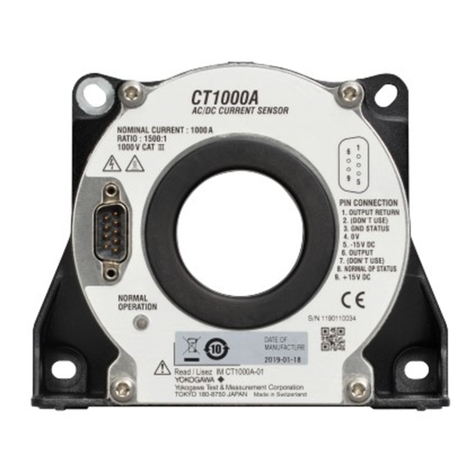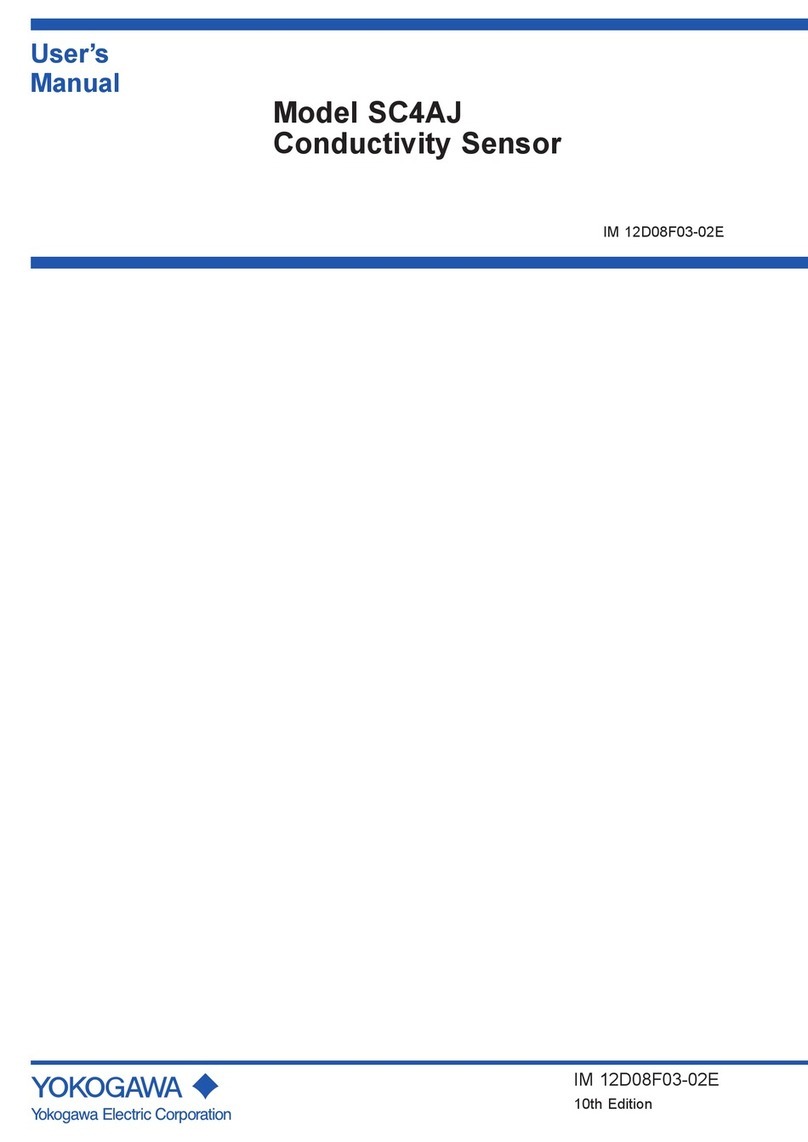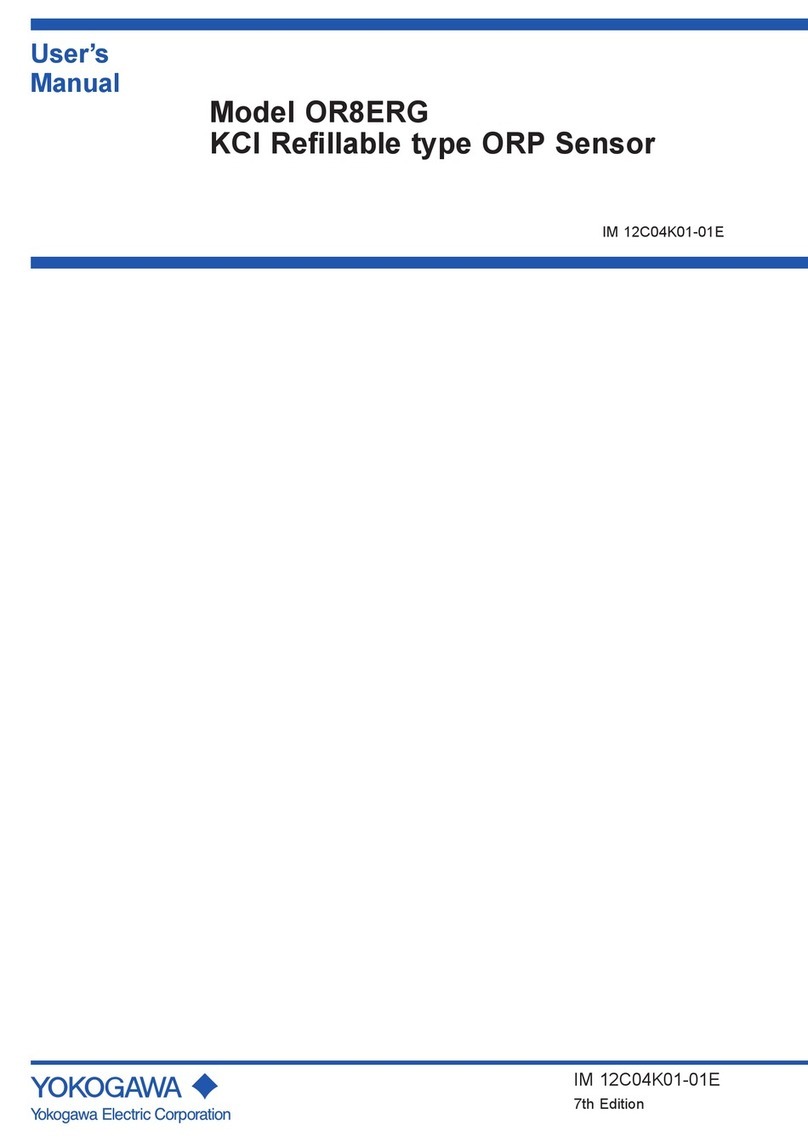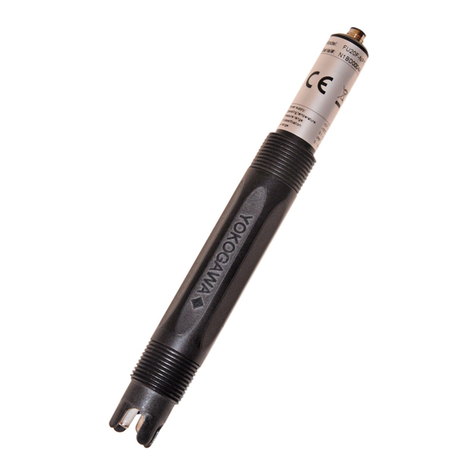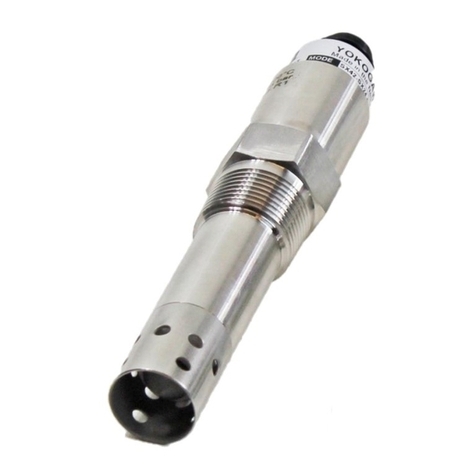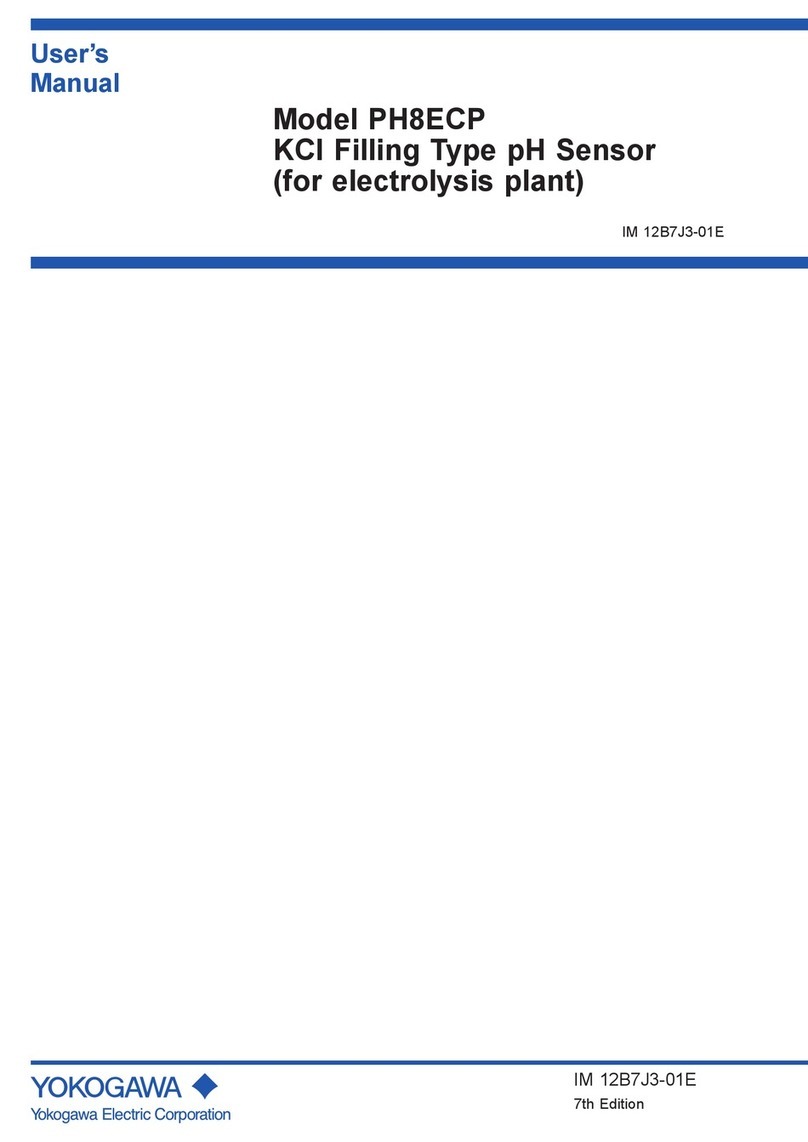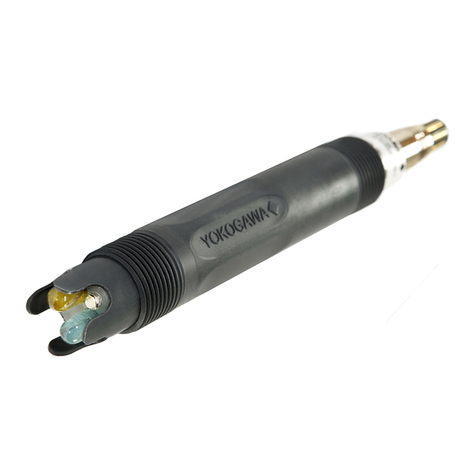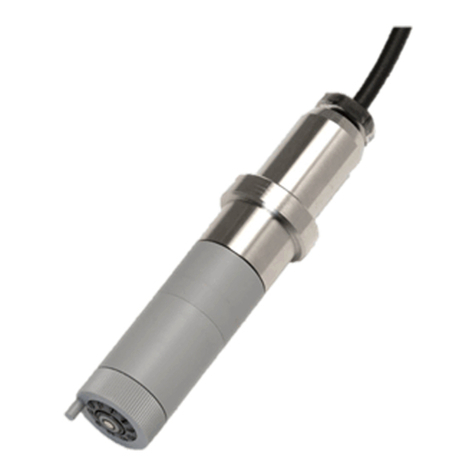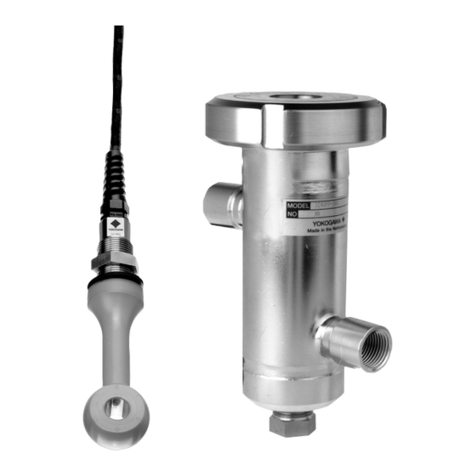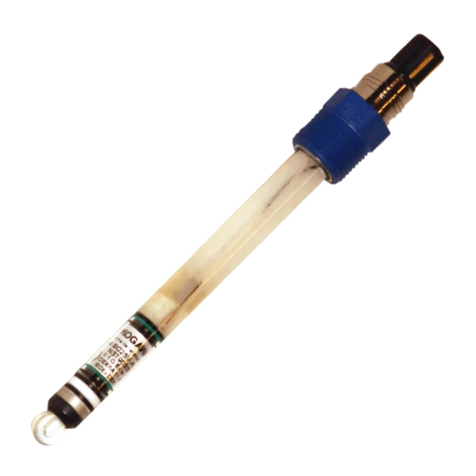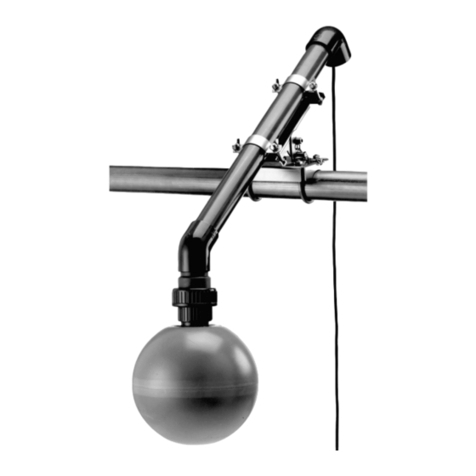
IM 701926-01EN 2/2
General Specifications
Item Specifications
Operating environment Probe (excluding the pincher tip)
5°C to 40°C, 25% to 85% RH (no condensation)
Pincher tip
–40°C to 85°C, 25% to 85% RH (no condensation)
Extension lead
–40°C to 85°C, 25% to 85% RH (no condensation)
Storage environment –30°C to 60°C, 25% to 85% RH (no condensation)
(probe, excluding the pincher tip)
Operating altitude 2000 m or less
Storage altitude 3000m or less
Recommended calibration
period
1 year
Warm-up time At least 30 minutes
External dimensions 174 mm × 58 mm × 27 mm (excluding the connector and cable)
Total length 2420 mm ± 30 mm
Weight Approx. 300 g (probe, excluding the pincher tip)
Compliant
standards
Safety
standards8, 9
Probe (excluding the pincher tip)
EN 61010-031
Measurement category II 1000 Vrms
Pollution degree 2
Pincher tip
EN 61010-031
Measurement category III 1000 Vrms
Pollution degree 2
Extension lead
EN 61010-031
Measurement category III 1000 Vrms
Pollution degree 2
Probe and accessories
EN 61010-031
Measurement category II 1000 Vrms
Pollution degree 2
EMC standards Emission10 EN 61326-1 Class A
EN 55011 Class A, Group 1
EMC regulations in Australia and New Zealand
EN 55011 Class A, Group 1
Immunity EN 61326-1 Table 2
Environmental
standards11
EU RoHS Directive compliant
8 This product is for measurement category II (CAT II). Do not use it for measurement category III
(CAT III) or IV (CAT IV). When using devices with different measurement categories, the lower
measurement category applies. Because the measurement category of the probe is lower than
its accessories, when the probe and its accessories are used together, measurement category II
(CAT II) applies.
Measurement Category Definition
Measurement category “O” (Other) Measurement category O (Other) applies to
measurement of a circuit that is not connected directly
to the main power source.
Measurement category II (CAT II) CAT II applies to measurement of electrical equipment
that is powered through a fixed installation such
as a wall outlet wired to a distribution board and
measurement on such wiring.
Measurement category III (CAT III) CAT III applies to measurement at the distribution level,
that is, building wiring, fixed installations.
Measurement category IV (CAT IV) CAT IV applies to measurement at the primary supply
level, that is, overhead lines, cable systems.
9 Pollution degree refers to the degree of adhesion of a solid, liquid, or gas which deteriorates
withstand voltage or surface resistivity. Pollution Degree 2 applies to normal indoor atmospheres
(with only non-conductive pollution).
10 This product is a Class A (for industrial environments) product. Operation of this product in a
residential area may cause radio interference in which case the user will be required to correct
the interference.
11 For conformity to environmental regulations and/or standards other than EU, contact your local
Yokogawa office.
Waste Electrical and Electronic Equipment (WEEE)
(EU WEEE Directive valid only in the EEA* and UK WEEE Regulation in the UK)
This product complies with the WEEE marking requirement. This marking indicates
that you must not discard this electrical/electronic product in domestic household
waste. When disposing of products in the EEA or UK, contact your local Yokogawa
office in the EEA or UK respectively.
* EEA: European Economic Area
Authorized Representative in the EEA (AR)
Yokogawa Europe B.V. is the authorized representative of Yokogawa Test & Measurement Corporation
for this product in the EEA. To contact Yokogawa Europe B.V., see the separate list of worldwide
contacts, PIM 113-01Z2.
Disposal
When disposing of YOKOGAWA products, follow the laws and ordinances of the country or region
where the product will be disposed of.
Compliance with the Radio Waves Act (Republic of Korea)
This product complies with the Radio Waves Act (Republic of Korea). Note the following when using
the product in Republic of Korea.
이 기기는 업무용(A 급 ) 전자파적합기기로서 판 매자 또는 사용자는 이 점을 주의하시기
바라며 , 가정외의지역에서사용하는것을목적으로합니다 .
(The product is for business use (Class A) and meets the electromagnetic compatibility
requirements. The seller and the user must note the above point and use the product in a place
except for home.)
Registration No: KCC-REM-IMY-EEN335
Equipment Name: Differential Probe
Trade Name: Yokogawa Test & Measurement Corporation
Manufacturer: Yokogawa Test & Measurement Corporation
Country of Origin: Japan
产品中有害物质的名称及含量
This section is valid only in China.
部件名称 有害物质
铅 (Pb)汞 (Hg)镉 (Cd)六价铬 (Cr(VI)) 多溴联苯 (PBB) 多溴二苯醚 (PBDE)
框架 ( 塑料) ×○ ○ ○ ○ ○
线路板 ASSY ×○ ○ ○ ○ ○
○ : 表示该有害物质在该部件所有均质材料中的含量均在 GB/T 26572 规定的限量要求以下。
× : 表示该有害物质至少在该部件的某一均质材料中的含量超出 GB/T 26572 规定的限量要求。
环保使用期限 :
该标识适用于 SJ/T 11364 中所述,在中华人民共和国销售的电子电气产品的
环保使用期限。
只要您遵守该产品相关的安全及使用注意事项,在自制造日起算的年限内,则
不会因产品中有害物质泄漏或突发变异,而造成对环境的污染或对人体及财产
产生恶劣影响。
注)该年数为“环保使用期限”, 并非产品的质量保证期。零件更换的推荐周期,
请参照使用说明书。
3. How to Use
WARNING
• Turn off the power to the circuit under measurement when you connect or disconnect
the probe from the circuit. Connecting or removing the probe while the power is on
is dangerous. Do not touch the probe after turning on the power to the circuit under
measurement.
• Do not disconnect the probe’s BNC connector from the oscilloscope while the probe is
connected to the circuit under measurement. Before disconnecting the BNC connector,
turn off the power to the circuit under measurement, and disconnect the probe from the
high voltage parts of the circuit.
CAUTION
• This probe is designed to measure the voltage difference between two points on the
circuit under measurement. It does not electrically isolate the circuit under measurement
from the measuring instrument.
• Use a soft cloth to clean the probe. Be careful not to break the probe.
Do not immerse the probe in liquid or use abrasive cleaners on the probe. Do not use
benzene or other solvents on the probe.
Preparation
1.
Have the probe and an oscilloscope with the probe IF ready.
2.
Insert the probe interface completely into the oscilloscope input, and confirm that the BNC
connector and interface pin are securely fastened. You will hear the latch click when the
connectors lock into place.
3.
When you connect the probe to an oscilloscope with the probe IF, the attenuation ratio and
input coupling on the oscilloscope are set automatically. If you change the attenuation ratio
of the probe using the attenuation switch, the attenuation ratio on the oscilloscope changes
automatically.
4.
If necessary, attach the provided extension leads, pincher tips, and resistance adapters to the
input leads.
Connecting Accessories
If you are using input leads and pincher tips, use the 100 Ω resistance adapters.
Input leads
100 Ω resistance adapters (yellow)
If you are connecting extension leads (1 m) to input leads, use the 150 Ω resistance adapters.
Input leads
150 Ω resistance adapters (green)
Extension leads (1m)
Note
• Accurate measurements may not be possible near objects with strong electromagnetic fields
such as transformers, large current circuits, and wireless equipment.
• Before use, flip the attenuation switch back and forth several times. The switch’s electrical
contacts can weaken if not used for long periods of time.
• To take accurate measurements, we recommend that you calibrate the probe once a year.
4. Specifications
Electrical Specifications
Item Specifications
Frequency bandwidth1, 2 DC to 150 MHz (–3 dB)6
Using the extension leads (typical)3: DC to 100 MHz (−3 dB)7
Input type Balanced differential input
Attenuation 50:1 or 500:1, switchable
Input resistance and
capacitance (typical)3
4 MΩ + 5 pF (to ground)
Allowable differential voltage
(between + and – terminals)
±140 V (DC + ACpeak) at 50:1 attenuation
±1400 V (DC + ACpeak) at 500:1 attenuation
Allowable common mode
voltage
±1400 V (DC + ACpeak) or 1000 Vrms
Maximum input voltage (to
ground)4
±1400 V (DC + ACpeak) or 1000 Vrms
CMRR (typical)1,3 –80 dB at 60 Hz, –50 dB at 1 MHz
Output voltage1±2.8 V (DC + ACpeak)
Value when the probe is used in combination with an oscilloscope
whose input resistance is 50 kΩ or higher
Output impedance Used on a 1 MΩ input oscilloscope
Noise (conversion to input,
typical)3
50 mVrms at 50:1 attenuation
300 mVrms at 500:1 attenuation
Propagation delay (typical)313 ns at 50:1 attenuation
12 ns at 500:1 attenuation
DC gain accuracy1, 5 ±2% when the common mode input voltage is ±400 V
±3% when the common mode input voltage is ±1000 V
Rated supply voltage ±12.3 V ±0.3 V
Power is supplied through the dedicated probe interface.
Consumption current (typical)330 mA
1 At an ambient temperature 23 ± 5°C, humidity 55% ± 10% RH, 30 minutes after the power is
turned on.
2 The frequency bandwidth when combined with the oscilloscope.
3 Specifications of items with “typical” are typical or mean values. They are not strictly guaranteed.
4 Frequency derating (load reduction) applies.
Derating of the input voltage by frequency
10000
1000
100
10
0.01 0.1 1 10 100
1000
Frequency [MHz]
Maximum input voltage [Vrms]
13.3 V
5 The accuracy depends on the vertical axis accuracy of the oscilloscope. It is the sum of the DC
gain accuracy and offset voltage.
6 Specification when the probe is used in combination with 100 Ω resistance adapters.
7 Specification when the probe is used in combination with 150 Ω resistance adapters and the
extension leads.
